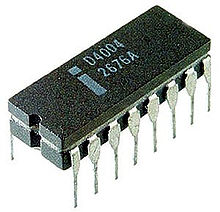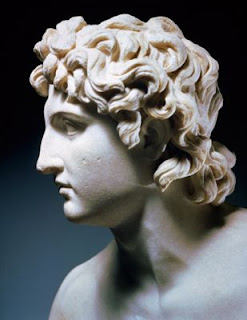On 16th August 2012, the minhas base of Kamra was attacked by a
group of terrorist. PAC Kamra and Minhas Air Base are situated in the
Attock district next to the GT road. Kamra is considered to be a very
important strategic area for the air force. Fighter air-crafts like
Mirages, Mishaq and JF-17 are built here.
There are many questions raised after this incident among the civilians. My friends used to argue with me why the airbases and cantt have so much security. According to them armed forces are supposed to take care of the country, and what they are actually doing is giving the security to themselves. I hope this answers their question. We are at the mid of the war against terrorist and there are many threats that the forces receive and face. The military assets are very important for the armed forces, they cost a lot in terms of time and money and to take care and protect them is equally important. If the assets are safe then the military can work on the safety of the country. This is the reason why there is high security check-posts at the entrance of the base or cantt. My friends who have visited the bases or cantt may have witnessed it.
The other question is that where was the security or were the forces not aware of it. There were 9 terrorists and all of them were shot dead. Only 1 security guard was shaheed and one injured. The security guard who become shaheed was the one who tried to shop the terrorist at the first check post and he opened fired when they didn't stop. He was shot dead on that occasion. Even the Base commander who is the senior most officer at the base also got shot at his shoulder. The terrorist were not allowed to enter beyond a limited area. They even tried to attack the residential area of the base but were stopped at the earliest. The terrorists could only damage one of the hangers only because that was the closest to the wall through which they entered. More damage could have been done if preparations were not made beforehand. What else the people want?
This kind of resistance is remarkable and worth mentioning in the defence of the forces. No one knows what their actual plans were. They might have come to destroy the factory or something like that. If anything get destroyed or damaged then its a shame for the country, its nation and its security forces. It should be taken into notice that those terrorist were also professional and they were fully equipped with weapon. They had also done their homework before the attack. Despite that, the forces gave them a tough day and failed their attempt to damage any further property. Without any preplanned preparation this would have been impossible.
We must think before saying anything about anyone. The soldiers of our forces are the ones who put their lives in danger in order to try to provide safety to our country and people. The reason behind any successfully mission lie in the leadership quality of the leader. In this operation as well we see that the base commander, Air Commodore Azam, led the operation from the front. When the hanger was set on fire, he himself ran towards it. At that occasion he got a bullet in his shoulders. The Chief of Air Staff called him and told him to go back home. Despite that order he returned to the field to control the situations. These kind of attitude by the leader greatly boost the morale of the soldiers. We must look at this before criticizing the senior level officers.
It is our country and our armed forces. We must talk and spread good about them. They work so hard for the protection of the country putting their lives in danger. What they need from us is our support and encouragement to boost up their morale level. In the end I would like to salute to all the soldiers of armed forces.
Long live Pakistan Armed Forces.
Long live Pakistan.
Pakistan Zindabad.
Written by:
Ahmed Ahsan Khan
There are many questions raised after this incident among the civilians. My friends used to argue with me why the airbases and cantt have so much security. According to them armed forces are supposed to take care of the country, and what they are actually doing is giving the security to themselves. I hope this answers their question. We are at the mid of the war against terrorist and there are many threats that the forces receive and face. The military assets are very important for the armed forces, they cost a lot in terms of time and money and to take care and protect them is equally important. If the assets are safe then the military can work on the safety of the country. This is the reason why there is high security check-posts at the entrance of the base or cantt. My friends who have visited the bases or cantt may have witnessed it.
The other question is that where was the security or were the forces not aware of it. There were 9 terrorists and all of them were shot dead. Only 1 security guard was shaheed and one injured. The security guard who become shaheed was the one who tried to shop the terrorist at the first check post and he opened fired when they didn't stop. He was shot dead on that occasion. Even the Base commander who is the senior most officer at the base also got shot at his shoulder. The terrorist were not allowed to enter beyond a limited area. They even tried to attack the residential area of the base but were stopped at the earliest. The terrorists could only damage one of the hangers only because that was the closest to the wall through which they entered. More damage could have been done if preparations were not made beforehand. What else the people want?
This kind of resistance is remarkable and worth mentioning in the defence of the forces. No one knows what their actual plans were. They might have come to destroy the factory or something like that. If anything get destroyed or damaged then its a shame for the country, its nation and its security forces. It should be taken into notice that those terrorist were also professional and they were fully equipped with weapon. They had also done their homework before the attack. Despite that, the forces gave them a tough day and failed their attempt to damage any further property. Without any preplanned preparation this would have been impossible.
We must think before saying anything about anyone. The soldiers of our forces are the ones who put their lives in danger in order to try to provide safety to our country and people. The reason behind any successfully mission lie in the leadership quality of the leader. In this operation as well we see that the base commander, Air Commodore Azam, led the operation from the front. When the hanger was set on fire, he himself ran towards it. At that occasion he got a bullet in his shoulders. The Chief of Air Staff called him and told him to go back home. Despite that order he returned to the field to control the situations. These kind of attitude by the leader greatly boost the morale of the soldiers. We must look at this before criticizing the senior level officers.
It is our country and our armed forces. We must talk and spread good about them. They work so hard for the protection of the country putting their lives in danger. What they need from us is our support and encouragement to boost up their morale level. In the end I would like to salute to all the soldiers of armed forces.
Long live Pakistan Armed Forces.
Long live Pakistan.
Pakistan Zindabad.
Written by:
Ahmed Ahsan Khan









